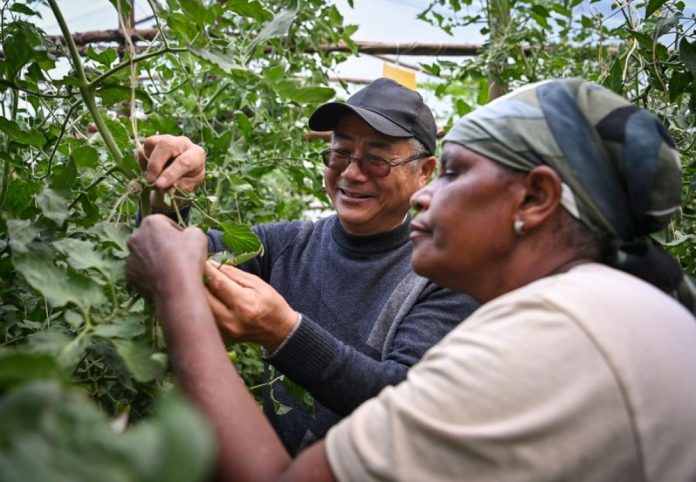With the growing demand for tomatoes and increasing pressures from pests, diseases, and climate change, a Chinese grafting technology is emerging as an innovative solution in Kenya.
Grafting is a cost-effective and sustainable solution, providing farmers with plants that are not only more resistant to disease but also maintain high fruit quality.
This technology has already significantly boosted tomato production on pilot farms, ensuring more consistent and profitable harvests for farmers.
Hellen Rono, a farmer in Bomet County, is one of the farmers who have witnessed improved yields after adopting this technology.
The farmer revealed that she discovered this technology after experiencing losses in her previous harvest as a result of tomato wilt.
“I planted tomatoes inside my greenhouse, which is eight metres by 15 metres, and they started germinating and growing well, but in the middle, the tomatoes started withering one by one, just when they were about to reach the flowering stage,” She told Seeds of Gold, adding that the withering continued until almost 10 plants were dying each day.
She engaged an agricultural officer who would later confirm to her that the plants were infected with tomato wilt, a disease that later wiped out the entire plants.
Chamomile farming: How farmers are secretly making money from this eight-week herb
“We were told that there was no medicine. So, we were advised to irrigate the plants with a lot of water to avoid withering,” she explains.
“We did that and the whole farm inside the greenhouse remained flooded, but this did not help. By the time some plants started fruiting, the whole farm had withered. We did not have anything to harvest,” she added.
The loss prompted Hellen to research tomato wilt online, where she discovered tomato grafting, a technology from China that combats the disease.
She also learned that scientists had found high temperatures inside her greenhouse were also a problem, causing flowers to drop and plants to stop producing fruit.
The farmer would then undergo training on greenhouse management, including temperature regulation.
“We planted both grafted and non-grafted tomatoes under the same greenhouse. After a month, the non-grafted tomatoes started withering, while the grafted ones started to flower one after the other,” she explains. “They were not infected by the disease, while the non-grafted ones continued to wither. That is when we realised the grafted tomatoes did not have the disease.”
Hellen observed continued fruiting from the grafted tomatoes, which led to a bumper harvest for the local market in Bomet.
“It took 75 days for me to start harvesting grafted tomatoes. This is the same period as the non-grafted ones. However, the non-grafted ones finished faster, while I harvested the grafted ones longer,” she added.
Her first harvest from the grafted plants was 6.8kg compared to 5.1kg from the non-grafted. The highest harvest from the grafted plants was an incredible 73.2kg, while the non-grafted yield peaked at just 8.7kg before the plants died.
The Chinese grafting technology was introduced to local small-scale farmers through a partnership between Nanjing Agricultural University and Egerton University, as part of the project funded by the China-International Fund for Agricultural Development South-South and Triangular Cooperation Facility.
The rootstalk for the grafted tomatoes is from China, while the seedling is from Kenya. According to Joshua O. Ogweno, Professor of Horticulture at Egerton University, grafted seedlings benefit from better growth, higher yields, earlier maturity, and an extended fruiting period.
This innovation has helped farmers achieve a 50 percent increase in tomato yields compared to traditional farming methods.









